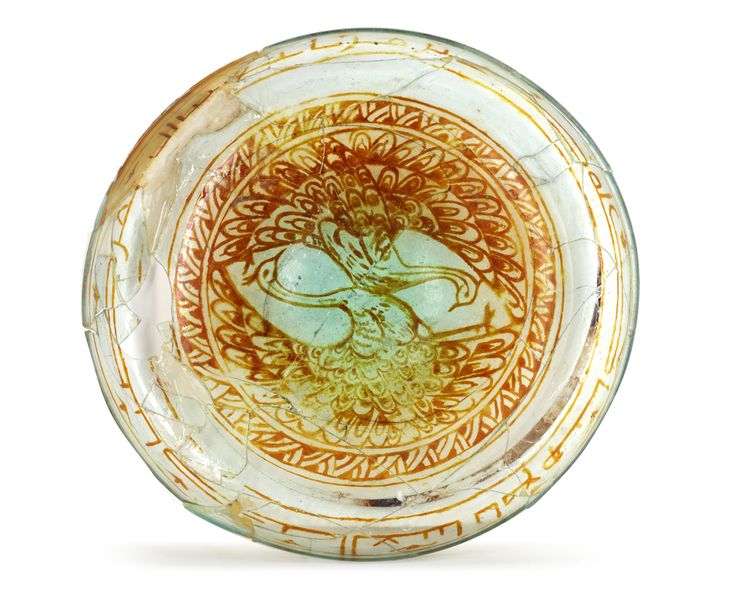A RARE ISLAMIC LUSTRE-DECORATED GLASS BOWL, 9TH-11TH CENTURY
A glass bowl with conical sides, decorated to the centre in honey-coloured lustre with two elegant peafowls flaring their feathers, the walls with a band of inscription in kufic script.
Diameter: 20 cm.
Height: 3 cm.
CATALOGUE NOTE
Extant examples of Early islamic lustre glass bowls are rare; the glass itself being thin-bodied and included with multiple bubbles, it would have been very difficult to preserve such an object. The tradition of lustre painting on glass has its origins in late Roman Egypt. Early experiments with the lustre technique are documented in the substantial corpus of glass shard material from Fustat dating back to at least the sixth/seventh century. The earliest dated lustre glass object is in the Museum of Islamic Art, Cairo, ascribed 'bi Misr' (in Egypt), 163 AH/779-80 AD (Rogers 2007, p.53, no.42). Although few examples in glass remain, a mould-blown lustre bowl in the British Museum (inv. no.1902,0517) displays similar characteristics in design to that of the present model. The description accompanying the British Museum bowl provides a good explanation for the process by which such a bowl would have been decorated: “The vessel was painted with a mixture containing copper oxides which fused with the glass when the vessel was heated in a reduction kiln (which limited the oxygen suppy). This created a metallic lustrous sheen”





